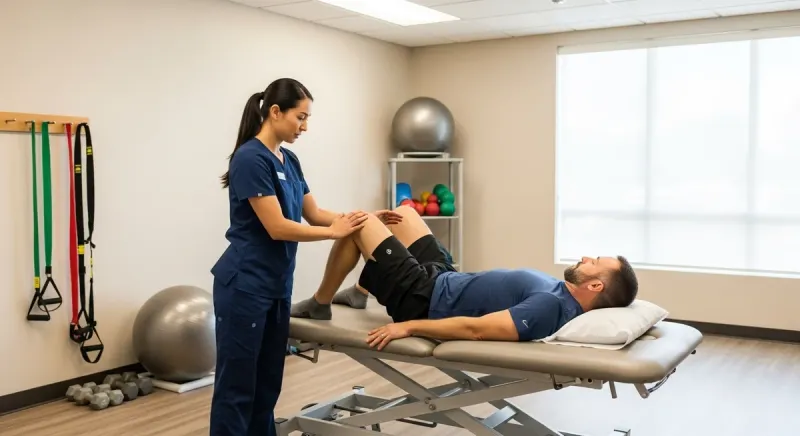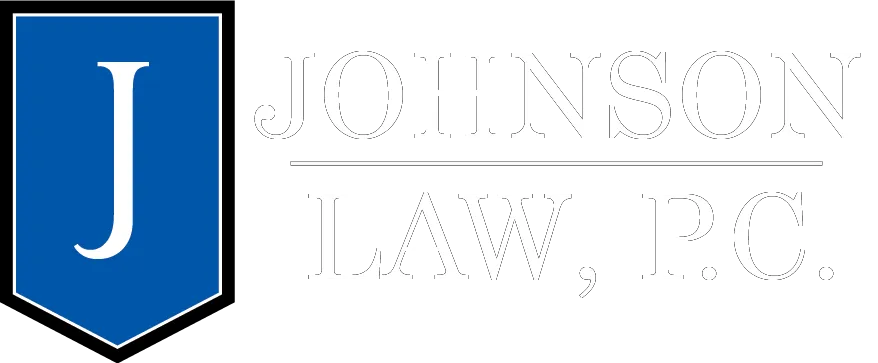Physical Therapy Legal Guide
Your Complete Guide to Physical Therapy After an Accident in Oregon
Don't let insurance companies minimize your injuries. Learn how proper physical therapy documentation strengthens your legal case while accelerating your recovery.

Why Physical Therapy is a Crucial Step in Your Accident Recovery
Disclaimer: This guide provides general information about post-accident physical therapy in Oregon, is not medical or legal advice, and does not create an attorney-client relationship. Consult licensed healthcare providers and an Oregon attorney about your specific situation before acting on this information.
In the chaotic aftermath of an accident, your mind races. There are insurance companies to call, police reports to file, and car repairs to arrange. Amidst this whirlwind of stress and paperwork, it's easy to dismiss the new ache in your neck or the stiffness in your back as minor issues that will simply fade away. But for many Oregonians, these initial symptoms are the first signs of deeper injuries that, if left unaddressed, can lead to chronic pain and long-term limitations.
This is where physical therapy becomes one of the most powerful tools in your recovery arsenal. It's a proactive, non-invasive medical treatment designed to do more than just manage your symptoms—it's about healing the root cause of your pain, restoring your strength and mobility, and empowering you to reclaim the active life you had before the accident. Whether you were in a collision on I-5, a slip and fall in Portland, or a workplace incident in Eugene, understanding your physical therapy options is a critical step toward a full and lasting recovery.
This guide is designed to be your trusted resource, walking you through every stage of the process here in Oregon. We'll demystify how to find the right specialist, explain how your insurance is set up to cover your care, and show you exactly how consistent treatment can strengthen not only your body but also your personal injury claim.
While rest is important, it's a passive approach to a very active problem. After an accident, your body immediately begins a complex healing process involving inflammation, muscle guarding, and scar tissue formation. Without expert guidance, this process can go awry, leading to improper healing, chronic stiffness, and persistent pain. Physical therapy actively intervenes, transforming your recovery from a game of chance into a strategic, guided journey.
Think of a physical therapist as a specialist who understands the unique mechanics of accident-related injuries, from whiplash and concussions to spinal misalignments and soft tissue damage. They don't just treat your symptoms; they diagnose the root cause of your dysfunction. Through a combination of hands-on techniques and prescribed exercises, they work to reduce inflammation, improve circulation to injured tissues, and ensure that scar tissue forms in a flexible, functional way rather than a restrictive one.
Heal Faster and More Completely
A targeted physical therapy plan accelerates your body's natural healing process by boosting circulation and ensuring proper tissue repair. This means you don't just patch over the injury—you rebuild it correctly.
Prevent Chronic Pain and Long-Term Complications
Addressing injuries like whiplash or back strain immediately with a professional helps you avoid a lifetime of discomfort by interrupting harmful compensation patterns before they become ingrained.
Restore Full Strength and Mobility
Physical therapy helps you safely regain the movement and strength you had before your accident through a structured, progressive plan that rebuilds your confidence in your own body.
How to Choose the Right Physical Therapist in Oregon: A Step-by-Step Guide
The right physical therapist can make the difference between full recovery and chronic pain. Follow this guide to find a specialist who understands both your medical and legal needs.
Look for Specialists in Accident and Injury Rehabilitation
The forces involved in a car accident or serious fall are unlike those from typical sports injuries. A crash sends a traumatic, high-velocity shockwave through your body, often creating a complex web of injuries that aren't isolated to a single joint. Look for clinics that highlight expertise in "auto accident injuries," "whiplash rehabilitation," "personal injury care," or "MVA (Motor Vehicle Accident) recovery." These specialists understand the interconnected nature of traumatic injuries and can perform comprehensive evaluations that generalists might overlook.
Verify Credentials and Check Reviews
Confirm that therapists are licensed with the Oregon Physical Therapist Licensing Board and look for advanced certifications like OCS (Orthopedic Clinical Specialist). When reading online reviews, focus on feedback from other car accident or personal injury patients. Look for comments about effective whiplash treatment, seamless PIP insurance handling, clear communication, and supportive administrative staff. These patterns indicate a clinic that truly understands your unique situation.
Ask These Critical Questions During Your First Call
Before booking, ask: "Do you have experience treating injuries like mine from a car accident?" "Do you work with my auto insurance or accept Personal Injury Protection (PIP)?" "How do you document progress for insurance and legal purposes?" "What does a typical treatment plan for my type of injury look like?" A top-tier clinic will answer these confidently, describing detailed documentation systems and structured treatment approaches specifically for accident recovery.
Consider a Clinic That Understands the Legal Process
Your physical therapist plays a dual role: healing partner and legal evidence creator. Choose a clinic that understands this responsibility and meticulously documents your injuries, connecting physical impairments to functional limitations. They should be skilled at translating your struggles into clear medical narratives, provide timely records to your attorney, and understand the importance of consistent treatment history. This collaboration ensures everyone works together to build the strongest possible case.
Navigating Insurance for Physical Therapy in Oregon
The thought of mounting medical bills can be a major source of stress, causing many accident victims to hesitate before seeking the care they desperately need. Fortunately, Oregon's insurance laws are designed to remove this financial barrier, ensuring you can prioritize your recovery without worrying about upfront costs.
Understanding Personal Injury Protection (PIP)
Personal Injury Protection is the foundation of Oregon's post-accident medical care system. Think of PIP as a dedicated medical fund built directly into your own auto insurance policy. The most important feature is that it is "no-fault," which means you can access these benefits immediately, regardless of who caused the collision.
Key PIP Benefits:
- Minimum $15,000 coverage required
- Covers 100% of physical therapy costs
- No upfront costs or deductibles
- Available regardless of fault
How It Works:
- 1 Provide your auto insurance information to the PT clinic
- 2 Clinic bills your auto insurance directly
- 3 You focus on recovery, not paperwork
What if My PIP Runs Out?
While $15,000 in PIP coverage may sound substantial, for more significant injuries requiring months of consistent care, it's not uncommon for those benefits to be exhausted before your recovery is complete. This does not mean your physical therapy has to end.
Option 1: Private Health Insurance
Once PIP benefits are depleted, your physical therapy clinic will coordinate the transition to your private health insurance. This may involve meeting a deductible or paying copays for each visit.
Option 2: Medical Lien
A more common solution is for the clinic to continue treating you under a medical lien. This formal agreement, usually arranged by your personal injury attorney, allows the clinic to provide all necessary care and be paid directly from your settlement when your legal case is resolved.
Key Benefit: No out-of-pocket costs and no dangerous gaps in treatment
Oregon's Direct Access laws also allow you to see a physical therapist without a physician's referral, putting the power directly in your hands to seek the care you need.
What to Expect From Your Physical Therapy Journey
Understanding the process helps you feel prepared and confident as you begin your recovery
The Initial Evaluation: Creating Your Roadmap to Recovery
Your first appointment is the most comprehensive and serves as the foundation for your entire recovery. It begins not with exercise, but with a conversation. Your physical therapist will listen intently as you describe the accident, the nature of your symptoms, and how your injuries are impacting your daily life.
This is followed by a thorough physical assessment where they will gently test your range of motion, evaluate your strength, check your reflexes, and palpate specific areas to identify the precise sources of pain and dysfunction. Based on these findings, they will explain their diagnosis in clear, understandable terms and work with you to establish meaningful goals.
Common Treatment Techniques for Accident Injuries
Your follow-up appointments will involve a combination of techniques tailored to your specific needs. A significant portion will be "manual therapy," where your therapist uses their hands to directly treat your injuries through targeted soft tissue massage, joint mobilizations, and specific stretches.
You'll also be guided through "therapeutic exercises" - not generic gym workouts, but targeted movements designed to stabilize injured areas, strengthen supporting muscles, and retrain your body to move correctly. Your therapist may also use modalities like heat, ice, or electrical stimulation to help manage pain and reduce inflammation.
Your Role in Recovery: The Importance of Consistency
While your physical therapist is an expert guide, you are the most important person on your recovery team. Physical therapy requires your active participation to be successful. The most critical factor is consistency - attending all scheduled appointments and diligently performing your prescribed home exercise program.
Why Consistency Matters:
- Each session builds upon the progress of the last
- Prevents setbacks and maintains therapeutic momentum
- Creates unbroken medical record for your legal case
- Demonstrates commitment to recovery to insurance companies
Timeline Expectations
Recovery timelines vary based on injury severity and your commitment to treatment:
The Critical Link: How PT Documentation Strengthens Your Legal Case
Your physical therapy records are far more than medical notes—they are powerful legal evidence that can make or break your personal injury claim. Insurance companies scrutinize every detail of your treatment, looking for ways to minimize your settlement. Understanding how your PT documentation supports your case empowers you to be an active participant in building the strongest possible claim.
Proving Your Injuries are Real and Serious
Insurance companies are naturally skeptical of injury claims, especially those involving soft tissue damage that doesn't show up clearly on X-rays. Your physical therapist's detailed notes provide objective, professional proof of your injuries, pain levels, and functional limitations.
What Strong PT Documentation Includes:
- Objective measurements of range of motion limitations
- Documented pain levels using standardized scales
- Functional limitations in daily activities
- Progress tracking showing improvement over time
- Professional opinions on causation and prognosis
Justifying the Need for Ongoing and Future Care
Your settlement should cover not just your past medical expenses, but also any future care you may need. Consistent physical therapy records establish a clear medical basis for these ongoing costs, ensuring you're compensated for the full scope of your recovery.
Future Care Documentation:
- Recommendations for continued therapy
- Potential need for specialized equipment
- Risk of re-injury or flare-ups
- Long-term maintenance therapy needs
The Dangers of "Gaps in Treatment"
One of the most damaging things to your personal injury claim is inconsistent treatment. Insurance companies actively look for gaps in your medical care as evidence that your injuries aren't as serious as you claim. They argue that if you were truly in pain, you would have sought treatment consistently.
What Insurance Companies Look For:
- Missed appointments without rescheduling
- Weeks or months between treatments
- Stopping treatment abruptly without medical clearance
- Failing to follow prescribed home exercises
How to Avoid Treatment Gaps:
- Schedule your next appointment before leaving
- Communicate with your attorney about any barriers
- Reschedule immediately if you must cancel
- Document any legitimate reasons for delays
The Bottom Line
Your physical therapy records tell the story of your injury, your pain, your struggle, and your recovery. When properly documented by a skilled therapist who understands the legal process, these records become compelling evidence that supports every aspect of your claim.
Answering Your Top Questions About Post-Accident PT
Direct answers to the most frequently asked questions from accident victims in Oregon
How long does physical therapy take after a car accident?
Recovery timelines vary significantly based on the severity of your injuries, your age, overall health, and commitment to treatment. Minor soft tissue injuries typically take 4-8 weeks, moderate injuries like herniated discs take 2-4 months, and severe injuries may require 3-6+ months. Your physical therapist will provide a more accurate timeline after your initial evaluation. The key is to continue treatment until you've reached maximum medical improvement, not to rush the process.
Is physical therapy supposed to be painful?
There's an important distinction between therapeutic discomfort and harmful pain. "Good pain" includes mild stretching sensations, muscle fatigue during exercises, brief discomfort during manual therapy, and soreness that improves within 24 hours. "Bad pain" includes sharp shooting pain, pain that worsens significantly during treatment, numbness or tingling, and pain that persists for days after treatment. Always communicate with your therapist about your pain levels so they can adjust techniques and intensity.
Can I do physical therapy at home?
Home exercises are essential but should supplement, not replace, in-clinic sessions. In-clinic sessions provide professional hands-on manual therapy, specialized equipment, expert monitoring, and detailed documentation for your legal case. Home exercise programs help maintain progress between sessions, reinforce proper movement patterns, build strength and endurance, and empower you to manage your recovery. Your home program should be specifically designed by your physical therapist based on your unique injuries.
When should I start physical therapy after my accident?
Ideally within 72 hours. Research shows early intervention leads to better outcomes. Even without severe immediate pain, early evaluation can identify hidden injuries, prevent chronic pain patterns, establish clear medical records linking symptoms to the accident, and begin treatment before inflammation and scar tissue set in. In Oregon, you can see a physical therapist without a doctor's referral, although some insurance plans may still ask for one.
Will my insurance cover physical therapy after an accident?
In Oregon, you have multiple layers of protection: Your auto insurance PIP coverage (minimum $15,000) typically covers reasonable physical therapy charges up to your policy limits regardless of fault, usually without a copay. Once PIP is exhausted, your private health insurance can take over (though you may have deductibles and copays). Your attorney can also arrange continued treatment under a medical lien, ensuring no gaps in care while your case is resolved.
How does physical therapy help my legal case?
Your PT records provide objective, professional proof of your injuries, pain levels, and functional limitations. They document objective measurements of range of motion limitations, standardized pain levels, functional limitations in daily activities, progress tracking, and professional opinions on causation and prognosis. Consistent treatment creates an unbroken medical record that demonstrates the severity of your injuries and your commitment to recovery, which insurance companies cannot easily dismiss.
Results That Speak for Themselves
Johnson Law, P.C. has recovered millions for Oregon accident victims who received proper medical care
Client Reviews
What Our Clients Say About Their Recovery
Real experiences from clients who trusted us with their medical and legal recovery
Don't Let Insurance Companies Minimize Your Recovery
Get the Physical Therapy Support You Need
Available 24/7 • No Fee Until Outstanding Medical Bills Are Addressed
Over $50 Million Recovered for Oregon Injury Victims

